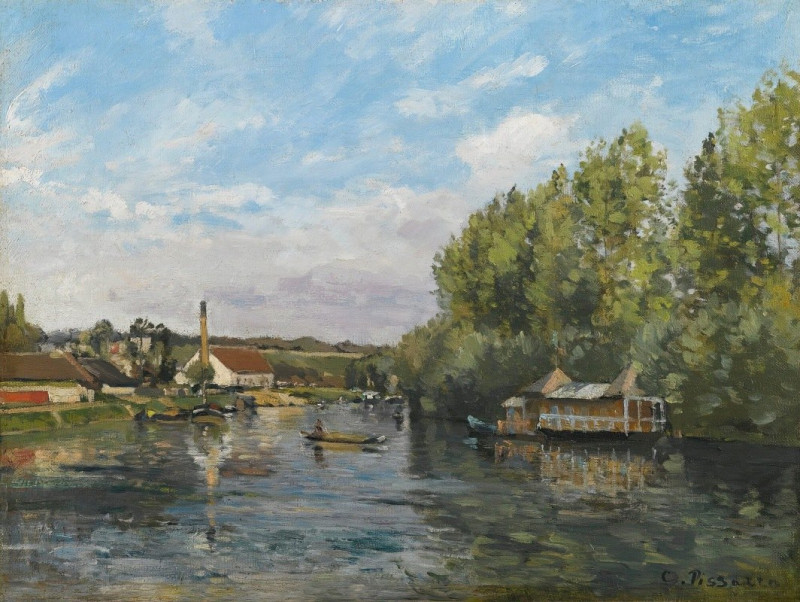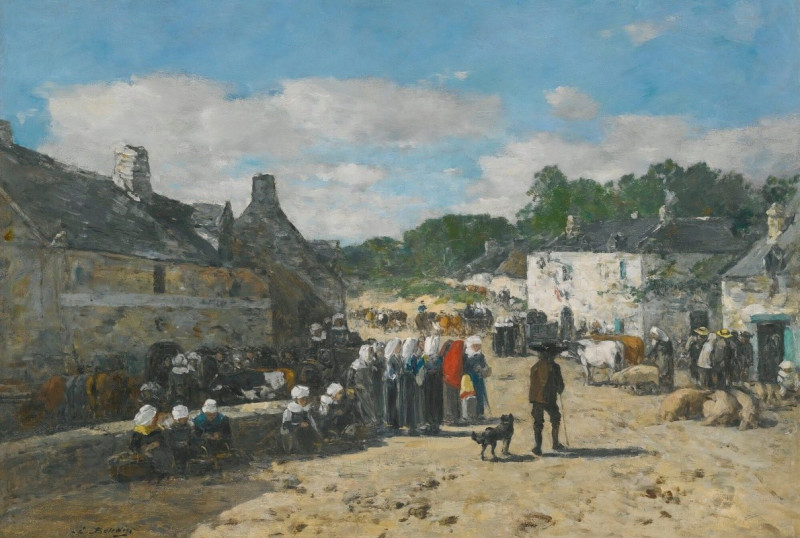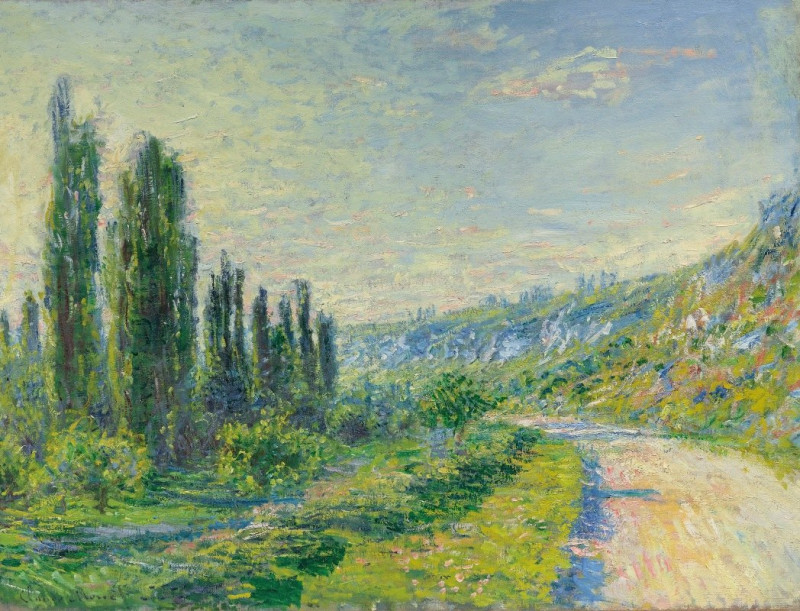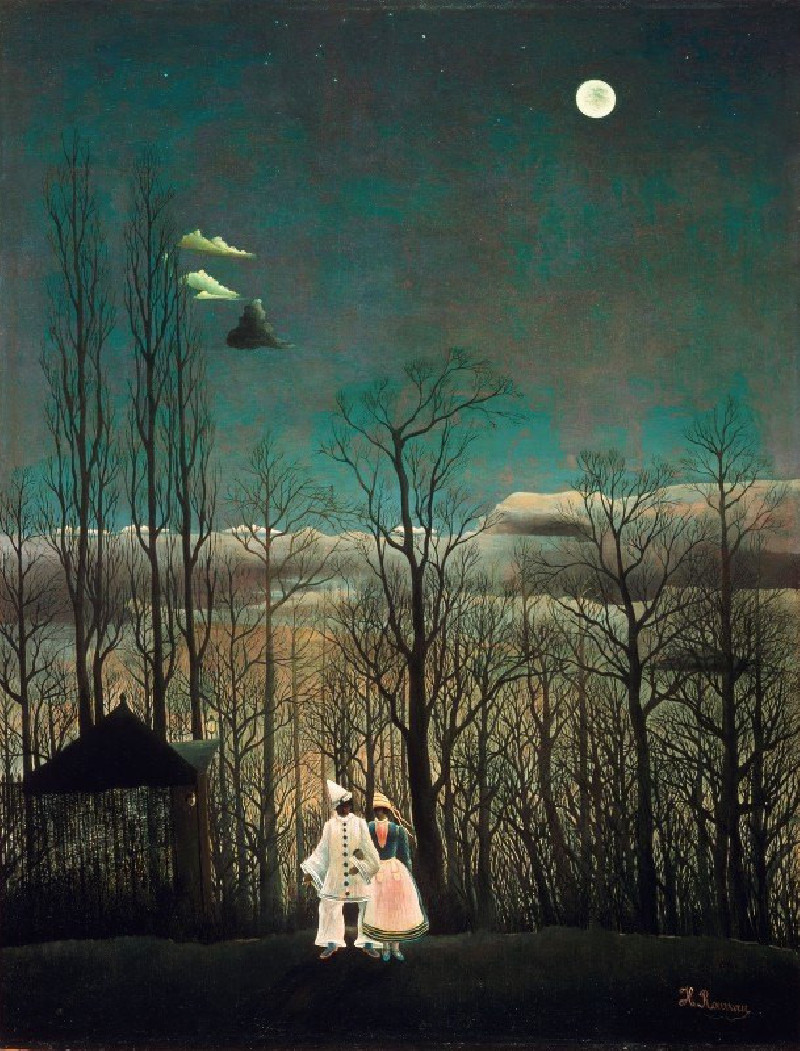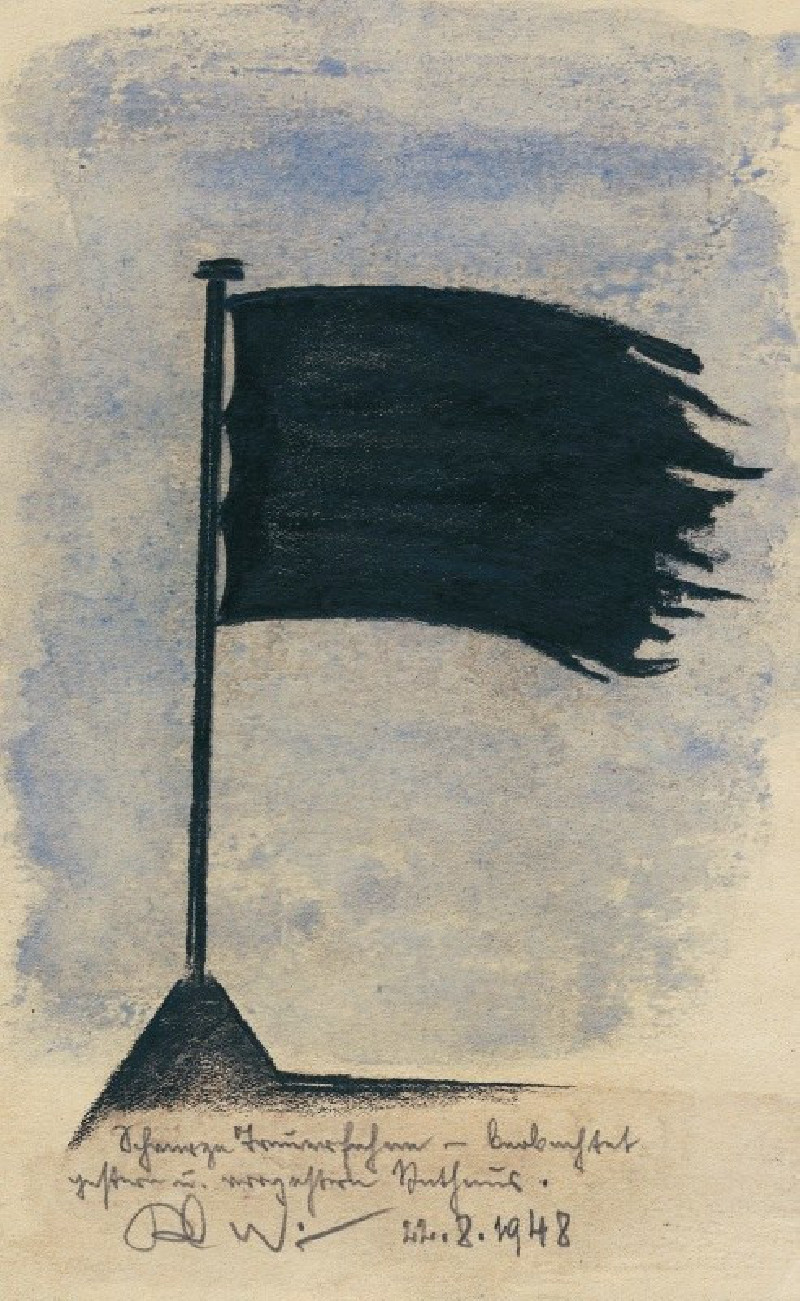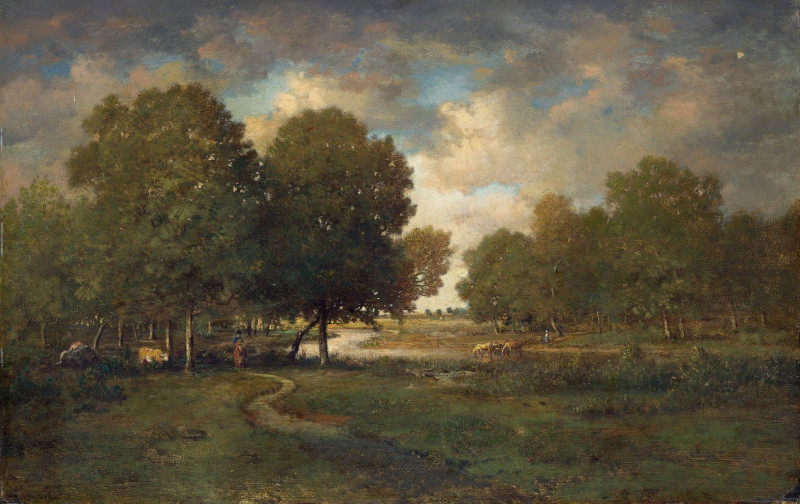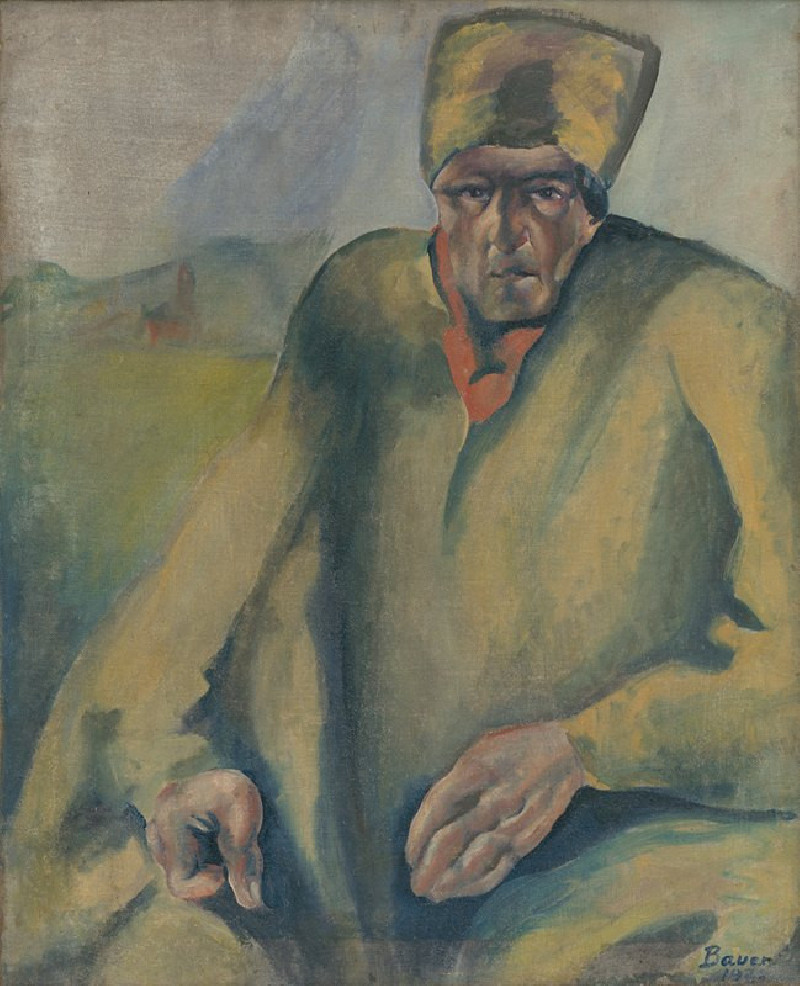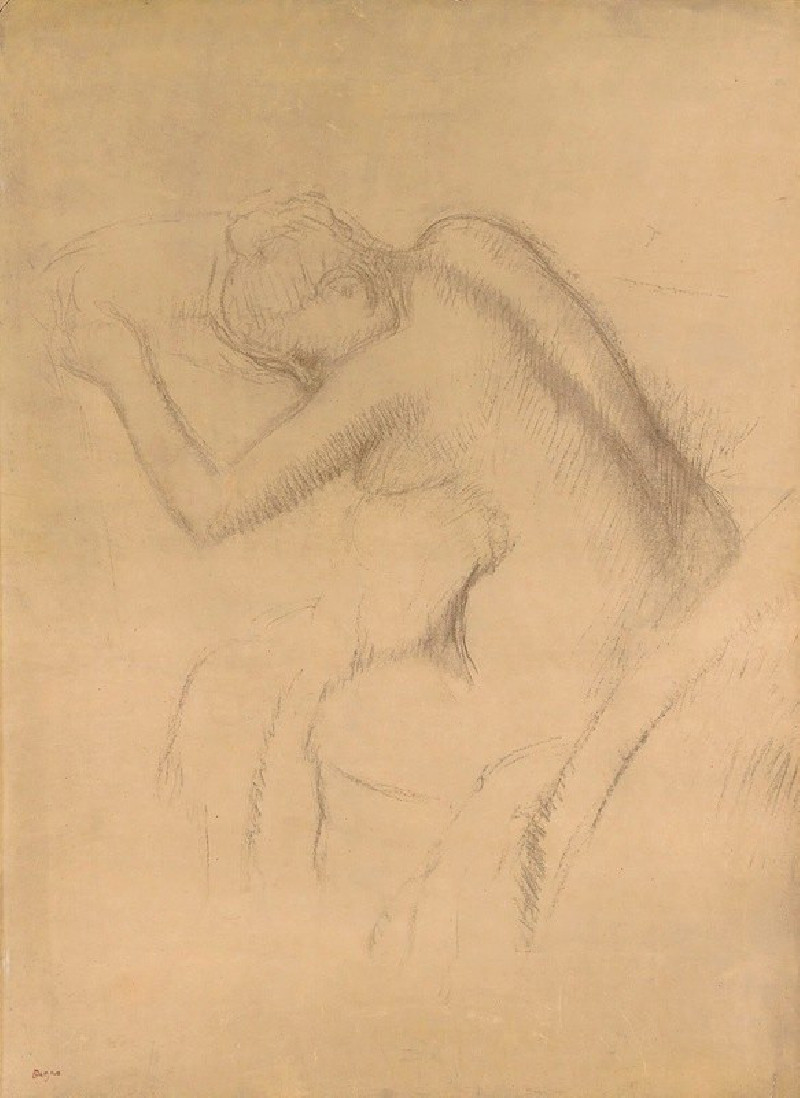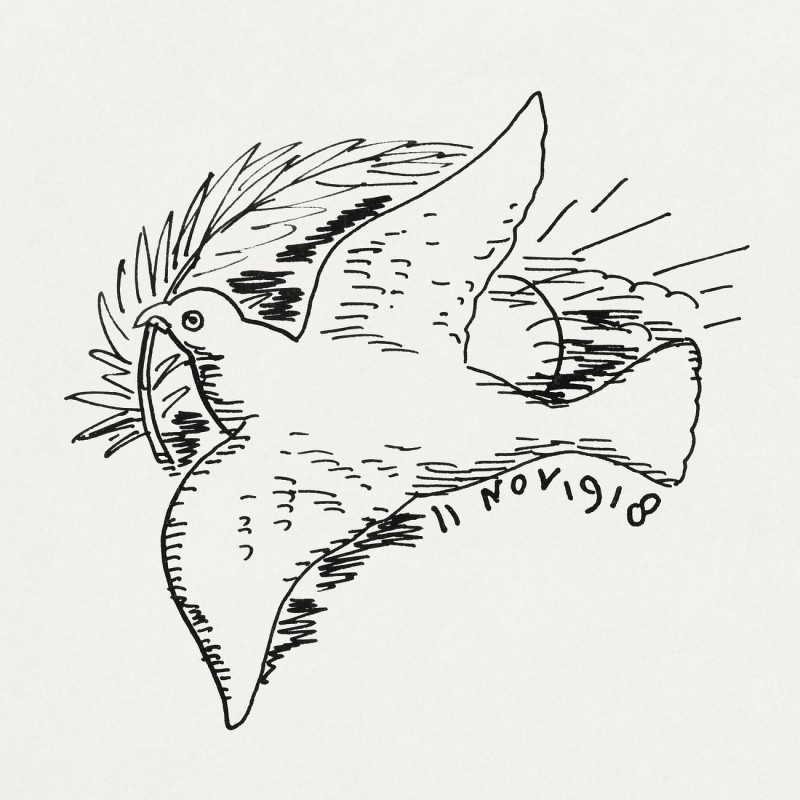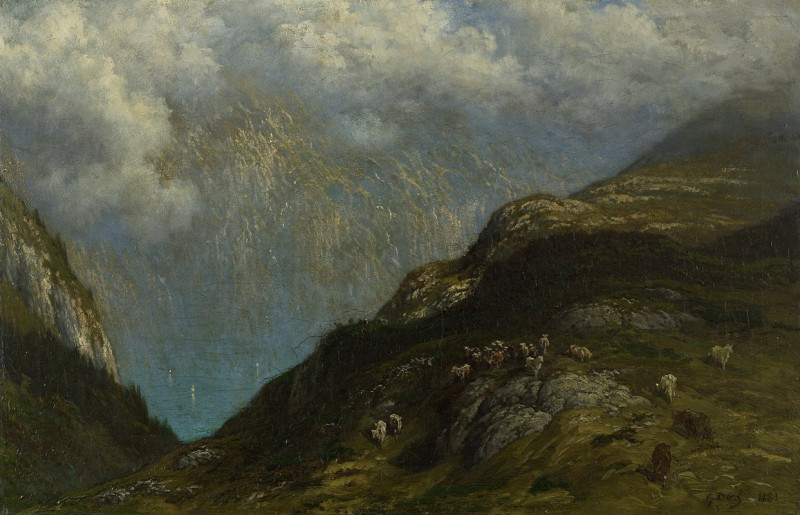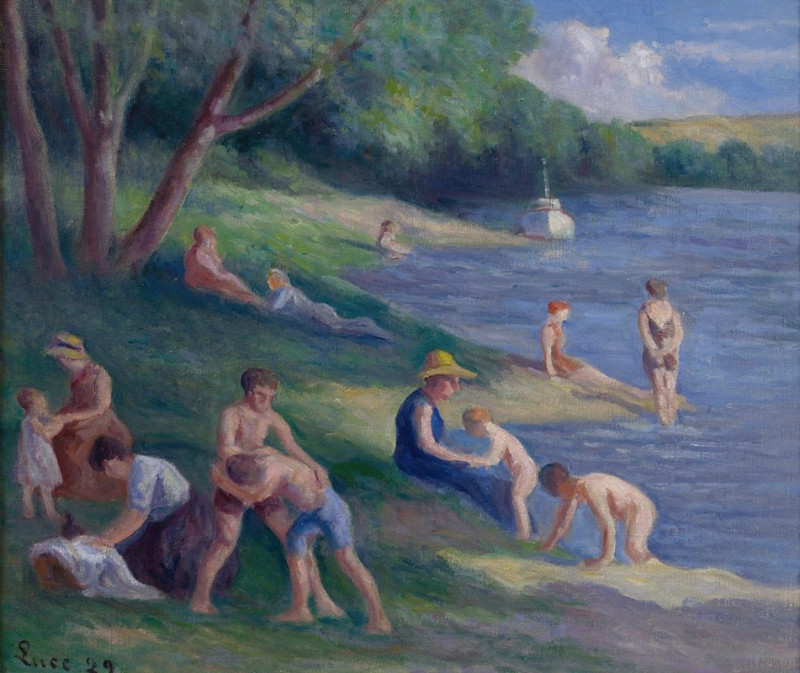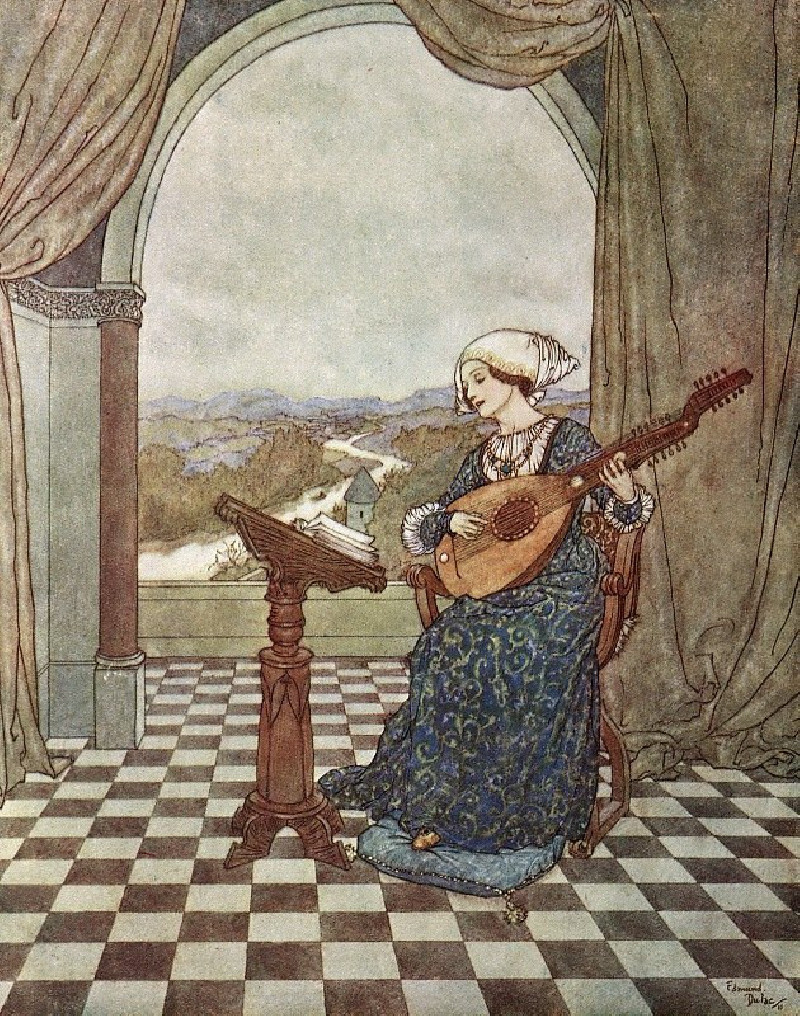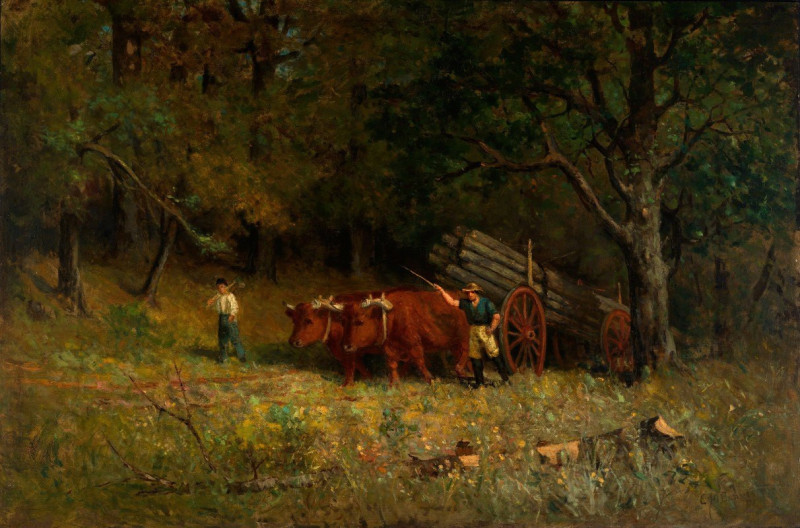La Seine À Port-Marly (circa 1872)
Technique: Giclée quality print
Recommended by our customers
More about this artwork
"La Seine À Port-Marly" captures a tranquil and picturesque scene of the Seine River that flows gracefully through Port-Marly, created by the esteemed French Impressionist painter, Camille Pissarro. This remarkable landscape offers a glimpse into rural French life in the 19th century with its vibrant depiction of natural and human elements coexisting harmoniously.The painting is bathed in natural light, embodying Pissarro's mastery in reflecting the changing conditions of the day. The serene water mirrors the sky and the lush riverbanks, playing with reflections and subtle shifts in color that suggest the movement of light and cloud shadows. Two boats can be seen gently floating on the river, which add a sense of calm activity to the scene. One of the boats is nearer to the viewer, with a person visible, likely engaged in a daily routine, underscoring the symbiotic relationship between humankind and nature.On the right bank, a large factory with a pronounced chimney stands prominently, distinct yet integrative, signifying the onset of industrialization even in less urban settings. Contrastingly, the left bank is quieter, featuring smaller buildings possibly used for residential or small-scale commercial purposes, framed by the dense foliage of trees that exhibit the lushness typical of the riverside.Overall, "La Seine À Port-Marly" not only showcases Pissarro's exquisite touch and impressionist style but also serves as a historical document reflecting the peaceful coexistence of natural beauty and industrial progress during that era.
Delivery
Returns
Blessed are they who see beautiful things in humble places where other people see nothing. — Camille Pissarro
Camille Pissarro (1830-1903) was born on St.Thomas (now the US Virgin Islands) to a Portuguese father and a Dominican mother. He went to Paris to study art at Ecole des Beaux-Arts. He was an early pioneer of pointillism and neo-impressionism and later became a mentor of many famous impressionist painters including Cezanne, Manet, Renoir, and Gauguin. His paintings depicted rural and urban French landscapes and lifestyle. Many of his works politically captured images of peasants and laborers. Today, he is considered the father of impressionism.

